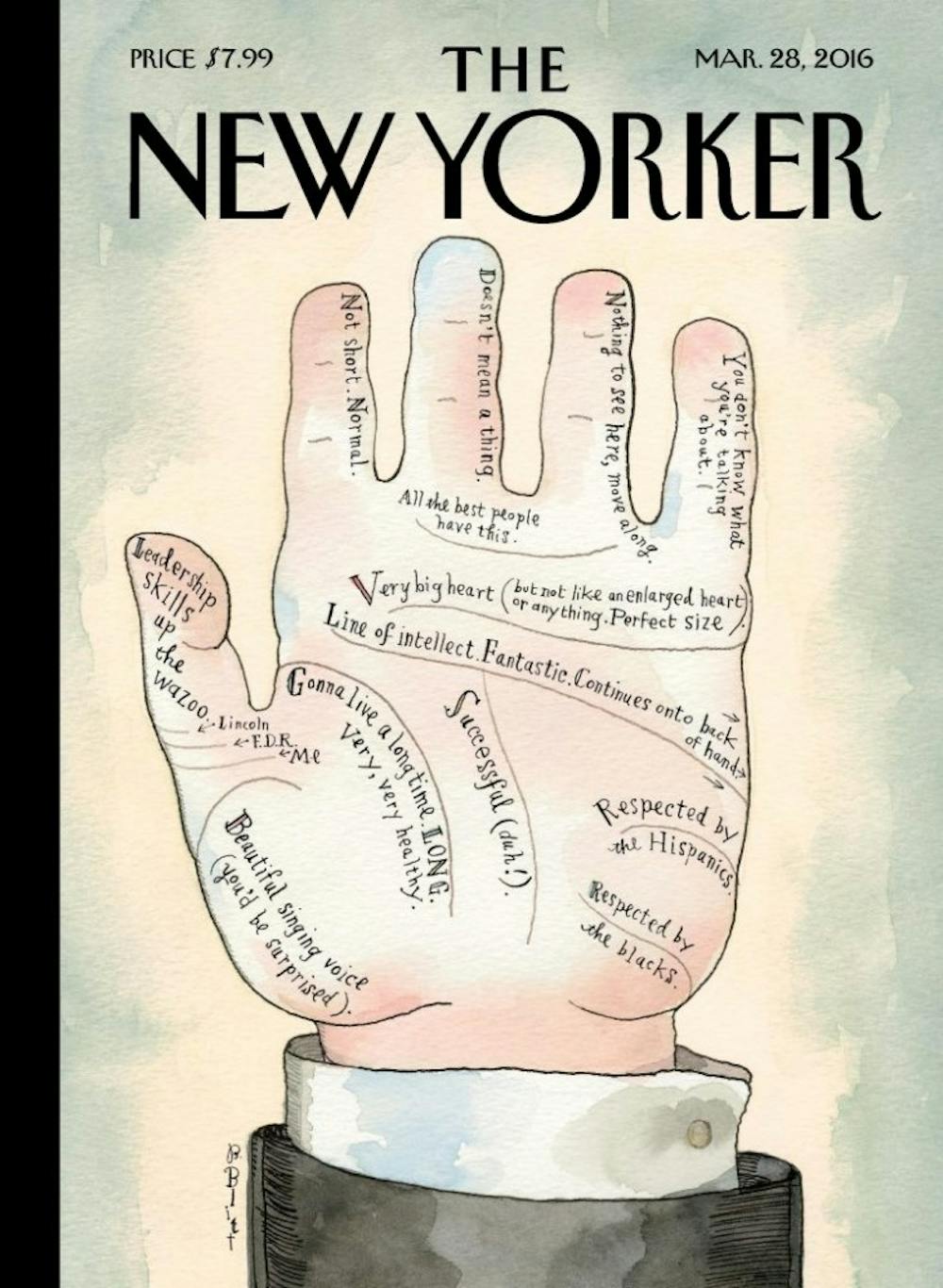Acclaimed cartoonist Barry Blitt will give a presentation next Monday entitled “In One Eye and Out the Other” in the Mattin Center.
Blitt’s work has been an essential contribution of political satire for several decades, and his distinctive style of ink and watercolor is as easily recognizable as are his caricatures of Dick Cheney, the Obamas or, more recently, Donald Trump.
Political cartoons are an important part of free political process in the United States. They often function as an immediate way for artists to criticize their government in a way that is highly visible and accessible to the public.
Since last year’s election, political cartoonists are now more important than ever. These artists shed a new light on American political discourse and the human manifestation of a failed spray tan running this country offers up plenty for them to criticize.
Tom Chalkley, a cartooning instructor at the Center for Visual Arts, spoke about the role of political cartoons in Trump’s rise to power.
“I don’t think there’s ever been since Nixon a political figure that’s been the subject of more ridicule than the President of the United States,” he said. “An ocean of ridicule didn’t seem to slow him up. The ubiquity and universality of the ridicule seems to have charged some people up, especially people who identify negatively towards the mainstream media environment.”
Chalkley said he’d seen Blitt’s work well before Blitt had become such a well-known artist, before his rise to fame for his regular covers on The New Yorker. He said that Blitt’s entire career had led up to the Trump era.
“He has stuck his neck out to the point where if they do decide to have a real coup d’état, they’re going to arrest him first,” Chalkley said. “He really likes to push the envelope, and you have to now because the things politicians do and say now are increasingly outrageous, and so to go beyond just reporting the news and to be really satirical, sometimes it takes a degree of complete outrageousness.”
In an email to The News-Letter, Blitt wrote about his view on politics and the political nature of his work.
“I’m really not particularly savvy about politics,” Blitt wrote. “I’m just always on the lookout for absurdities and for awful human behavior, both of which abound in the realm of politics.”
Craig Hankin, the director of the Center for Visual Arts, said that Blitt’s political work is important. He said that they invited him in the hope that he might be able to change the perspectives of some students.
“I think the provocative nature of his drawings, of his images, is important,” Hankin said. “On a national basis, his drawings provoke conversation and sometimes outrage, uproar. We thought Barry Blitt would be the perfect artist to bring in and give us his perspective both as a political observer and as an artist.”
Despite the political and technological change that Blitt has seen during the course of his career, the power of his simple ink and watercolor sketches is just as strong as it was decades ago. Hankin said that this is because images and text together are a potent combination.
“It’s amazing still, in this age of advanced technology that we live in, that a hand-drawn caricature by the right hand, by someone who really knows what they’re doing, is still capable of getting under people’s skin and really upsetting them,” Hankin said. “Or the other side of it is really getting them to laugh or nod their head in agreement.”
Blitt wrote about why he is drawn to this form.
“Pen and ink & watercolor is a good medium for my low attention span,” Blitt wrote. “It conveys immediacy, which is perfect for making funny pictures (much more so than a painstakingly realistic oil painting, say). Most of my ideas benefit from being expressed hastily. Sometimes, a scribbled drawing works in the service of the joke (or so I tell myself).”
According to Chalkley, Blitt’s work is personally expressive, and he hopes Blitt will reveal the details of his artistic process to Hopkins students.
Blitt also wrote that he hoped to reveal a bit about his process. He has a somewhat cynical perspective, which might be expected after seeing some of his more incisive pieces.
“I hope Hopkins students get a few laughs from my visit (at my expense, even), and maybe learn a bit about the process that goes into cartoon art,” he wrote. “I further hope they are able to understand me through my heavy Canadian accent.”





